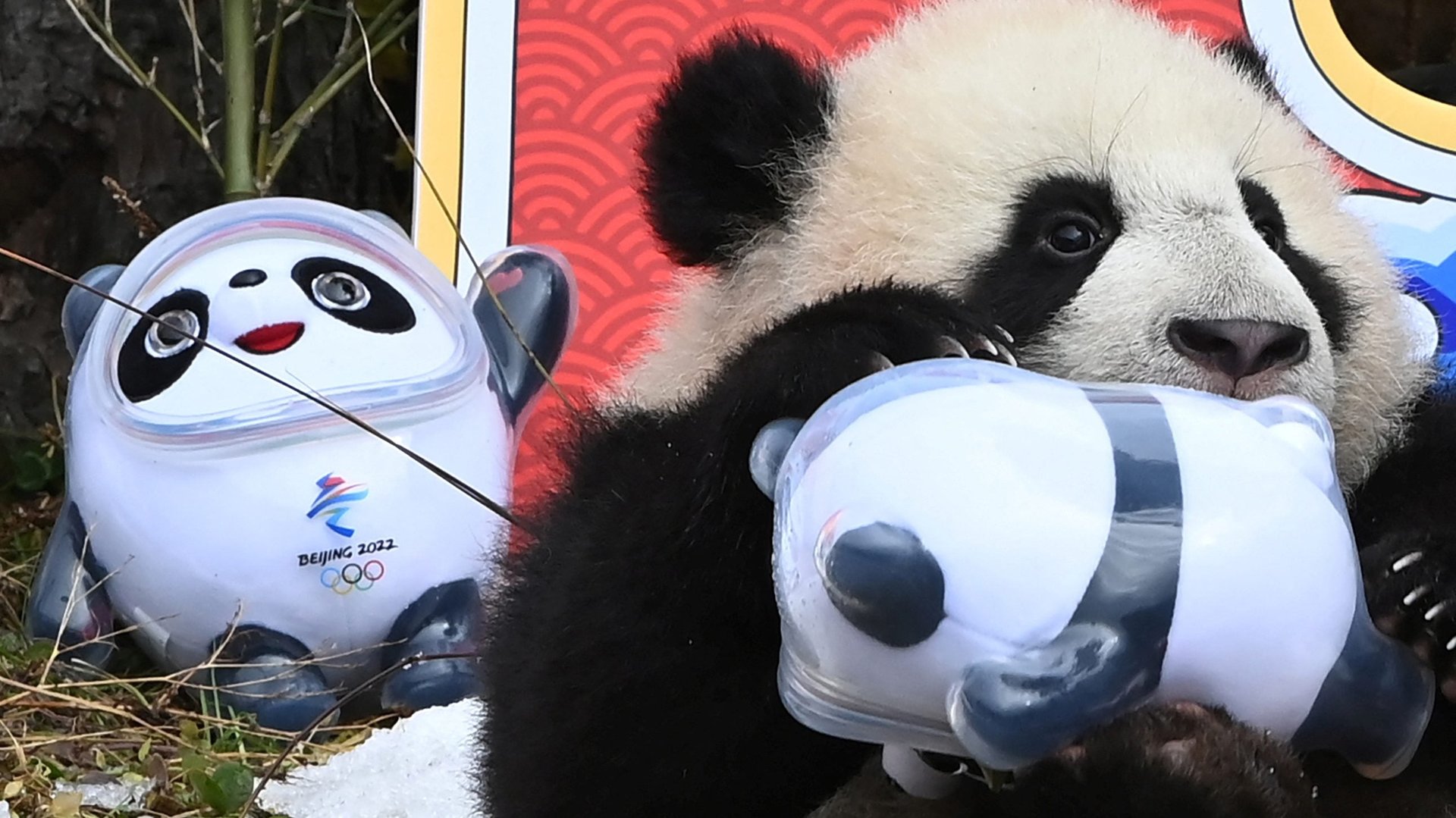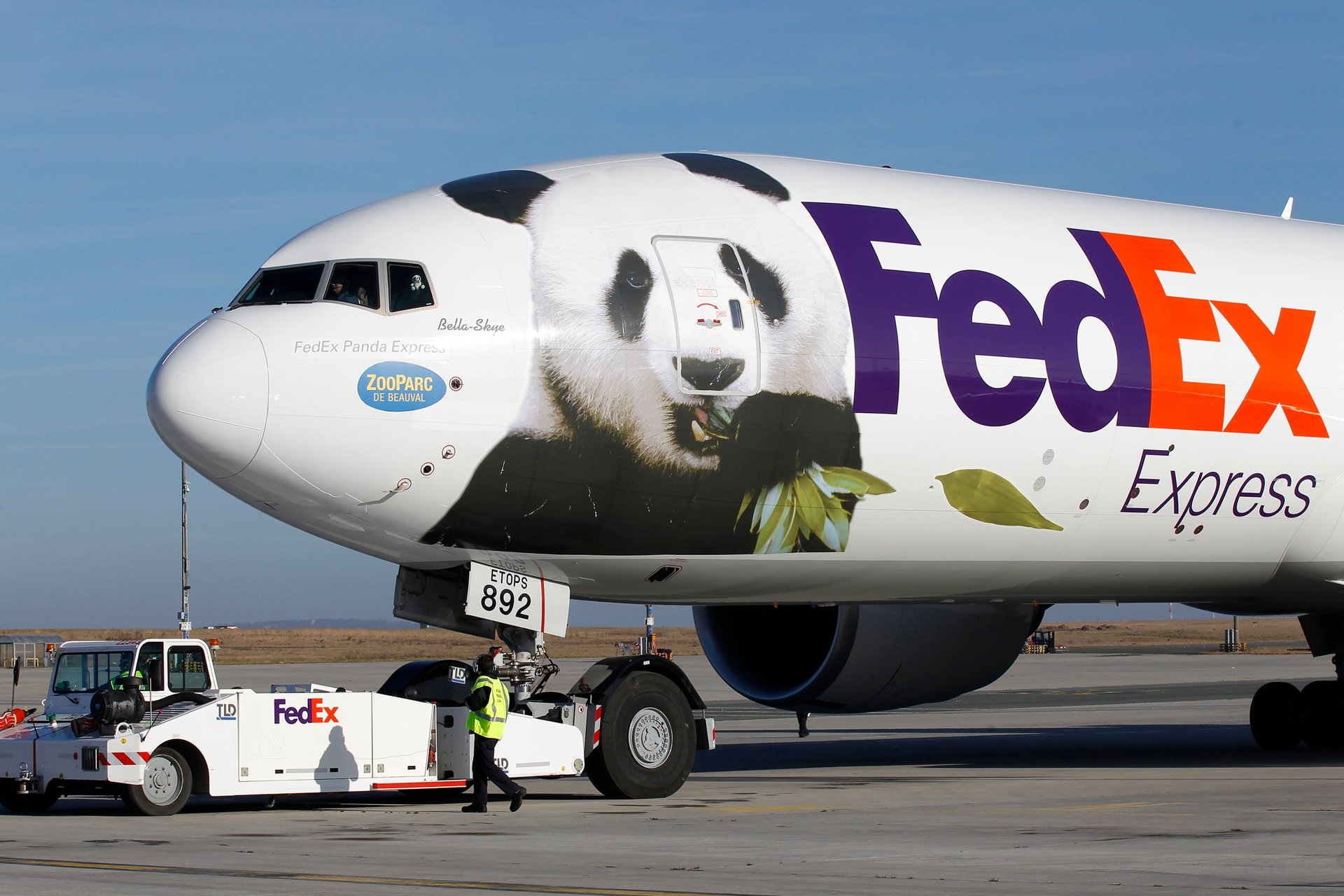The Beijing Winter Olympics mascot evokes China’s long history of “panda diplomacy”
From than 5,800 proposals, a roly-poly panda in a high-tech ice onesie is the official mascot of the 2022 Beijing Winter. Olympics. A 14-person design team from the Guangzhou Academy of Fine Art created Bing Dwen Dwen, a moniker that connotes purity, strength, and liveliness. Notable features include a rainbow around its face to evoke technology, and a heart on its left palm to signal Chinese hospitality.


From than 5,800 proposals, a roly-poly panda in a high-tech ice onesie is the official mascot of the 2022 Beijing Winter. Olympics. A 14-person design team from the Guangzhou Academy of Fine Art created Bing Dwen Dwen, a moniker that connotes purity, strength, and liveliness. Notable features include a rainbow around its face to evoke technology, and a heart on its left palm to signal Chinese hospitality.
As in previous years, mascots serve as all-purpose ambassadors during Games, and the leading design motif for Olympic souvenirs and branded merchandise.
Lead designer Cao Xue said that it was a challenge to come up with a new spin on the much-used panda. The winning design, which came with a 100,000 rmb ($16,000) prize, underwent hundreds of tweaks over several months. “We faced greater pressure because there have been many panda images designed in China and the world, ” explained Cao. A panda was also used as one of the five mascots of the Beijing 2008 Olympics.

Adorable giant pandas have served as diplomatic ambassadors for China for centuries. The earliest recorded instance of “panda diplomacy” goes back to the Tang Dynasty, when Empress Wu Zetian sent a pair of pandas to the Japanese emperor as tokens of friendship. China stopped gifting pandas in the 1980s, and sends them abroad on long-term loans for “scientific research”.
But in a 2013 study published in the journal Environmental Practice, Oxford University researchers found that”panda loans” started figuring in China’s foreign trade deals in 2008. Cubs were pawns in negotiations for commodities like uranium, renewable energy technology, vehicles, and salmon.

Here are several instances when the cuddly cubs have been agents of soft power:
1972 🇺🇸 Giant pandas Hsinghsing and Lingling were deployed to Washington soon after president Richard Nixon’s historic visit to China. The US sent two musk oxen in return.
1973 🇫🇷 A pair of pandas, Yenyen and Lili, migrated to the Paris Zoological Park during president Georges Pompidou’s term.
2008 🇹🇼 Aptly named Tuan Tuan and Yuan Yuan (“reunion” in Chinese) arrive in Taiwan as totems of the reunification negotiations.
2011 🏴 Yang Guang and Tian Tian touch down in Edinburgh, a symbol of “growing friendship” between Scotland and China.
2014 🇲🇾 Malaysians welcome Fu Wa and Feng Yi, marking the 40th anniversary of diplomatic ties between the two countries.
2018 🇫🇮 Jinbaobao and Huabao fly to Finland after then prime minister Juha Sipilä expresses support for the “one-China policy”.
2019 🇷🇺 Xi Jinping sent two young pandas Ru Yi and Ding Ding to convey his “respect and trust” to Russia. China also gifted Russia with two pandas in the 1950s for being the first superpower to recognize the People’s Republic of China.
Not that cute: Protests against panda diplomacy
Not everyone is amused with China’s free-wheeling panda lending scheme. Critics say that pandas are a distraction from real issues.
Protesters gathered outside the Copenhagen Zoo during the unveiling of a $24 million starchitect-designed panda enclosure in 2019. They argued that housing the borrowed pandas, as crowd-pleasing as they are, limits Denmark’s ability to criticize China’s policies.
Similarly, human rights activists protested the shipment of pandas sent to Germany ahead of the 2017 G20 Summit, saying that it muffled the cries for clemency for the Nobel Peace Prize winning intellectual Liu Xiaobo who was then being held as a political prisoner. Xiabo died of complications from liver cancer months later.
“They are using cute pandas as a political tool,” Chinese writer Liao Tianqi said to Radio Free Asia. “Western countries really should know the real meaning of panda diplomacy. It is a shameful and undignified political game.”